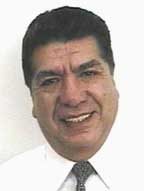Selected Works of Sergio Jiménez, MD, MACR
Regulation of type-II collagen gene expression during human chondrocyte de-differentiation and recovery of chondrocyte-specific phenotype in culture involves Sry-type high-mobility-group box (SOX) transcription factors
David G. Stokes, Thomas Jefferson University; Gang Liu, Thomas Jefferson University; Rita Dharmavaram, Thomas Jefferson University; David Hawkins, Thomas Jefferson University; Sonsoles Piera-Velazquez, Thomas Jefferson University; and Sergio A. Jimenez, Thomas Jefferson University
DATE: December 2001
SOURCE: Biochemical Journal, 360:461-470
RELATED URL: http://www.biochemj.org/bj/360/bj3600461.htm
View the article (300 KB PDF)
ABSTRACT:
During ex vivo growth as monolayer cultures, chondrocytes proliferate and undergo a process of de-differentiation. This process involves a change in morphology and a change from expression of chondrocyte-specific genes to that of genes that are normally expressed in fibroblasts. Transfer of the monolayer chondrocyte culture to three-dimensional culture systems induces the cells to re-acquire a chondrocyte-specific phenotype and produce a cartilaginous-like tissue in vitro. We investigated mechanisms involved in the control of the de-differentiation and re-differentiation process in vitro. De-differentiated chondrocytes re-acquired their chondrocyte-specific phenotype when cultured on poly-(2-hydroxyethyl methacrylate) (polyHEMA) as assayed by morphology, reverse transcriptase PCR of chondrocyte-specific mRNA, Western-blot analysis and chondrocyte-specific promoter activity. Essentially, full recovery of the chondrocyte-specific phenotype was observed when cells that had been cultured for 4 weeks on plastic were transferred to culture on polyHEMA. However, after subsequent passages on plastic, the phenotype recovery was incomplete or did not occur. The activity of a gene reporter construct containing the promoter and enhancer from the human type-II collagen gene (COL2A1) was modulated by the culture conditions, so that its transcriptional activity was repressed in monolayer cultures and rescued to some extent when the cells were switched to polyHEMA cultures. The binding of Sry-type high-mobility-group box (SOX) transcription factors to the enhancer region was modulated by the culture conditions, as were the mRNA levels for SOX9. A transfected human type-II collagen reporter construct was activated in de-differentiated cells by ectopic expression of SOX transcription factors. These results underscore the overt change in phenotype that occurs when chondrocytes are cultured as monolayers on tissue-culture plastic substrata.

